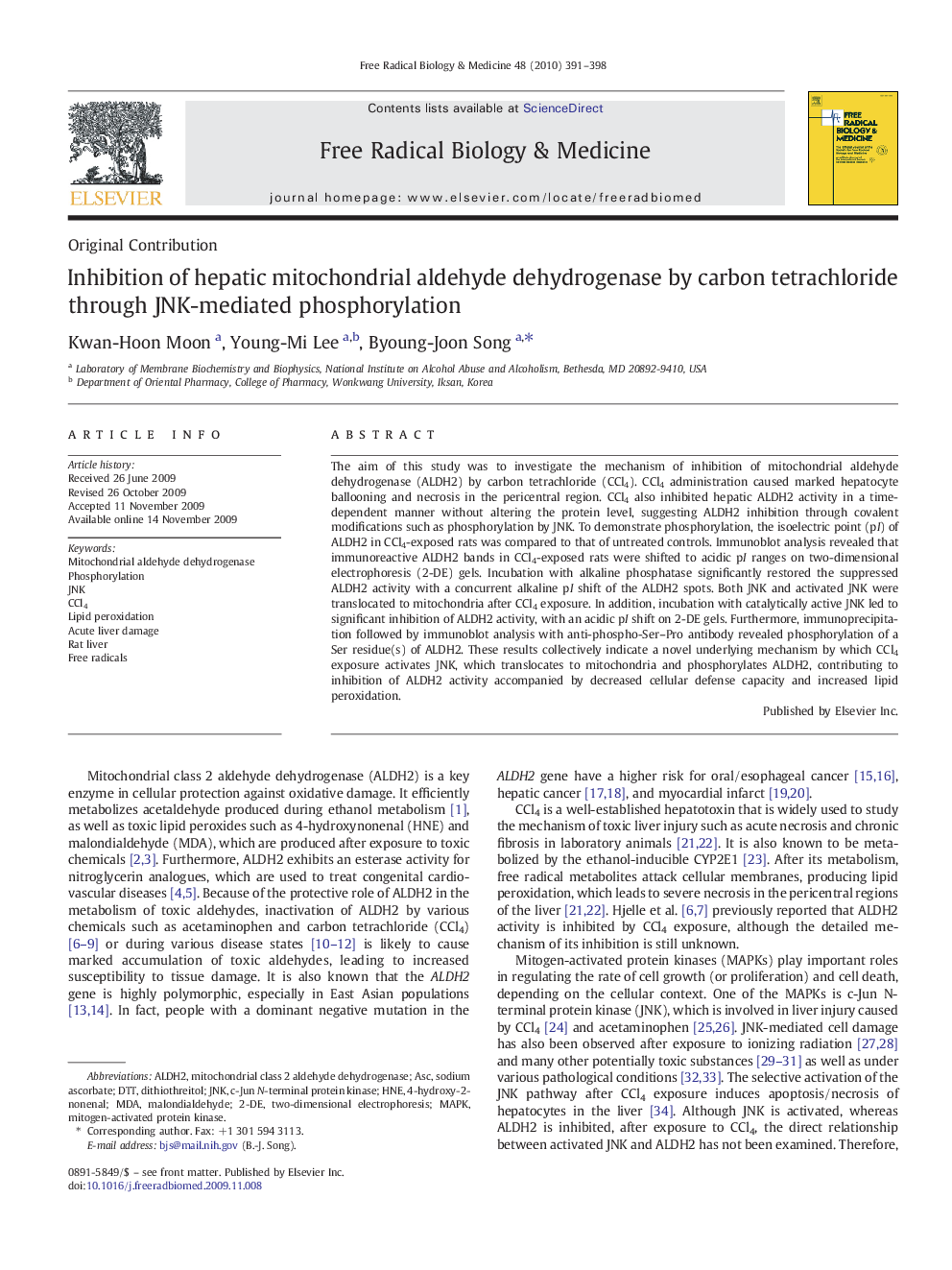| Article ID | Journal | Published Year | Pages | File Type |
|---|---|---|---|---|
| 1909581 | Free Radical Biology and Medicine | 2010 | 8 Pages |
The aim of this study was to investigate the mechanism of inhibition of mitochondrial aldehyde dehydrogenase (ALDH2) by carbon tetrachloride (CCl4). CCl4 administration caused marked hepatocyte ballooning and necrosis in the pericentral region. CCl4 also inhibited hepatic ALDH2 activity in a time-dependent manner without altering the protein level, suggesting ALDH2 inhibition through covalent modifications such as phosphorylation by JNK. To demonstrate phosphorylation, the isoelectric point (pI) of ALDH2 in CCl4-exposed rats was compared to that of untreated controls. Immunoblot analysis revealed that immunoreactive ALDH2 bands in CCl4-exposed rats were shifted to acidic pI ranges on two-dimensional electrophoresis (2-DE) gels. Incubation with alkaline phosphatase significantly restored the suppressed ALDH2 activity with a concurrent alkaline pI shift of the ALDH2 spots. Both JNK and activated JNK were translocated to mitochondria after CCl4 exposure. In addition, incubation with catalytically active JNK led to significant inhibition of ALDH2 activity, with an acidic pI shift on 2-DE gels. Furthermore, immunoprecipitation followed by immunoblot analysis with anti-phospho-Ser–Pro antibody revealed phosphorylation of a Ser residue(s) of ALDH2. These results collectively indicate a novel underlying mechanism by which CCl4 exposure activates JNK, which translocates to mitochondria and phosphorylates ALDH2, contributing to inhibition of ALDH2 activity accompanied by decreased cellular defense capacity and increased lipid peroxidation.
